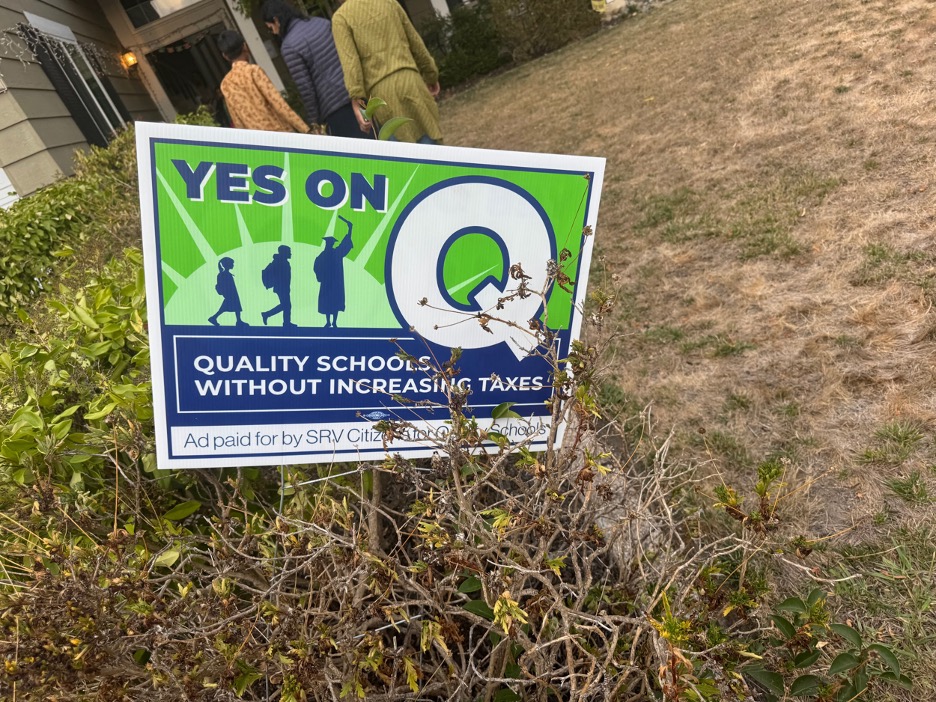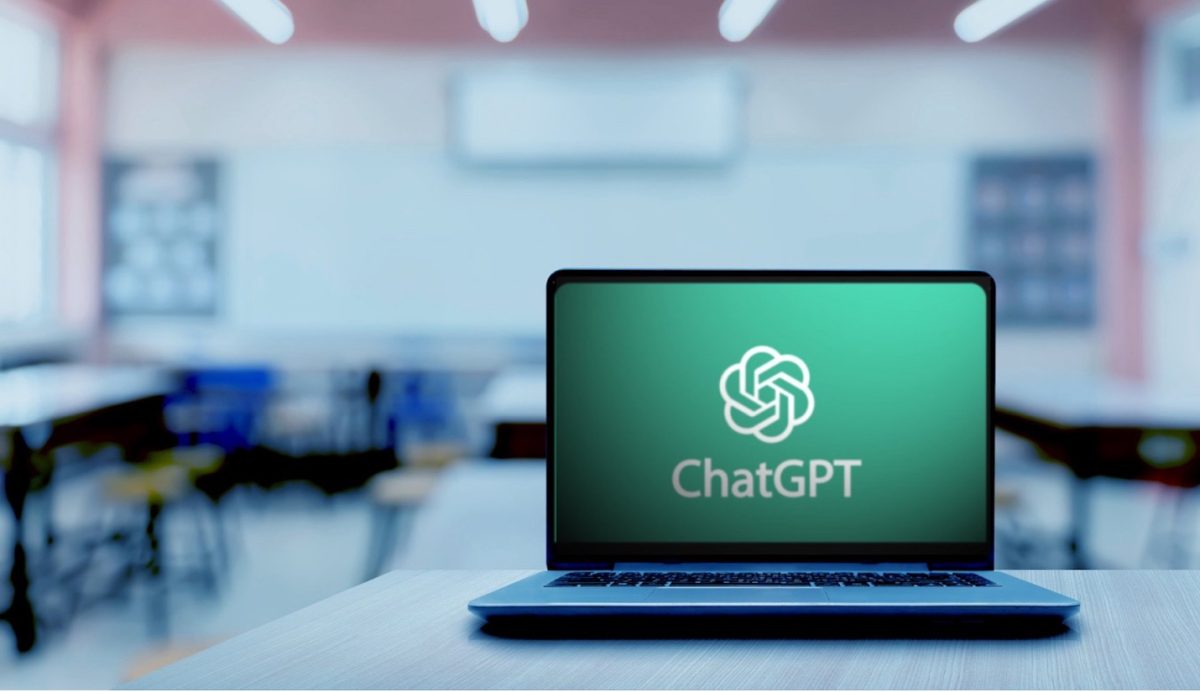As the 2024 election nears, voters will decide on measures to reshape education’s future across Contra Costa County – particularly to address unexpected funding challenges and changes.
In the San Ramon Valley Unified School District (SRVUSD), budget cuts have prompted transitions in learning technology, plans for staffing reductions, and another campaign for the renewal of an expiring parcel tax measure.
In this changing landscape, most students and parents need clarification about how the funding situation became so dire in the first place. San Ramon, in the heart of the East Bay, is home to many of the ultrarich, so it seems unlikely to be a city that’s scrambling to fund education. After all, the median sales price for homes in San Ramon is slightly more than $1.5 million.
But in reality, SRVUSD is one of the districts with the lowest funding in the state. Since school district funding is primarily determined by the Local Control Funding Formula, an equity-based funding model, supplemental state funding is determined by the number of “high-need” students in a district. For the 2024-25 school year, approximately 10% of SRVUSD students qualify as high-need students, giving the district only $7.5 million in grant money to support these students’ needs.
Even with the high property values and taxes in the area, only about 55% of funds needed to support SRVUSD schools are provided through property taxes. Fluctuations in tax revenues only make the figures more unpredictable. Donations from the community through the San Ramon Valley Education Foundation (SRVEF) help, but per-pupil funding in SRVUSD is significantly lower than in some of the neighboring districts.
For example, the Pleasanton Unified School District has $8,984 per student, while SRVUSD receives $8,685 per student. This is based on the percentage of “high-needs” students identified, which according to the official statewide LCFF summary data, was 10.36% for SRVUSD and 16.47% for PUSD in 2023-24.
Already at a disadvantage, recent funding crises have hit SRVUSD even harder. The district has identified the need to make ongoing reductions of $16.5 million beginning in the 2025-26 school year. A new Budget Advisory Committee has been assembled to provide educated recommendations and strategies to mitigate this shortfall and include caregivers, teachers, and students in the process.
Funding losses and budget changes
There are various unique challenges for the district this year, including still feeling the effects of the COVID-19 pandemic. District schools, which had to implement various systems to protect students’ health while also maintaining educational quality, are still strained by this crisis.
Unfortunately, all COVID governmental funds were one-time dollars and were not intended to be replenished once exhausted. Most of the early rounds of funding have already been spent, and the deadline to spend all the funds was Sept. 30.
Stella Kemp, SRVUSD’s assistant superintendent of business services, said the district used these funds for liaisons, counselors, before- and after-school interventions, PPE equipment, summer school, and Chromebooks for all students.
“All of those cost significant amounts of money, and with the expiration of COVID dollars, we knew we had to offload some this year,” Kemp added.
Declining enrollment, a trend reflected in districts across the country, also has strained school resources as the district receives state funding on a per-pupil basis. According to the SRVUSD, recent projections show that this trend will reduce state funding of the district in 2024-25. As a result, the district is focused on adjusting the budget to reflect these losses.
“The budget is like a living organism – it changes around and adapts to challenges,” Kemp said. “In this current year, because we’re so close to the minimum 3% reserve that’s required by the state, we have to make sure we don’t overspend.”
Budget changes are always a delicate balance as they must not harm all parties privy to the educational system, including students, teachers and communities.
“The challenge is that there are things in our expenditures that we have no control over,” Kemp said. “But we’ve tried to keep our planned budget cuts away from impacting classrooms and teachers, as well as students and families as [much as] we could.”
One such change is the transition to Google Classroom as the district’s main learning management system. Since the district was already paying for the Google Suite, it decided to stop paying twice the amount for Schoology and return to using Google Classroom, a platform that supposedly had all the same functionality and was used by the district during virtual learning during the 2020-21 school year.
While Google Classroom may be cost-effective, students and teachers across the district have expressed their dissatisfaction with the new learning management system.
“Google Classroom is inconvenient compared to the grading technology used in the past since you can’t see your grades for all of your classes at the same time or download a student report,” said Trisha Manipatruni, an 11th grader at Dougherty Valley High School in San Ramon. “And you can only communicate with your teacher [outside] of this system.”
Dealing with the inefficiencies of Google Classroom has pushed most teachers to solely use Infinite Campus, a platform mostly used by teachers before this year to take attendance, post progress reports and quarter/semester grades. Many teachers have resorted to using Infinite Campus more so they can organize assignments and grades more easily.
But this utilization of multiple platforms has just caused more confusion for students.
“Since teachers are switching to Infinite Campus because they don’t like Google Classroom, it’s harder to check both platforms and keep up with all my assignments,” Manipatruni said.
Additionally, funding issues have led to staffing reductions within SRVUSD. The $10 million in budget cuts during the current school year have included the elimination of more than 40 positions, according to a Sept. 22 article published by danvillesanramon.com.
Now, the district is calling upon the community and government to help find solutions to the crisis. They’ve already created a Budget Advisory Committee with significant community interest.
“Just because we’re a middle-class community doesn’t mean our students and teachers don’t need support,” Kemp said. “We’re not the only school district in California that’s dealing with this. It’s up and down the state, which is why we need changes to the funding model and to raise its base.”
Renewing Measure Q
As the district looks for solutions to its funding crisis, Measure Q is a forerunner on the Nov. 5 ballot. Measure Q is a renewal of an existing $144 annual parcel tax, which will provide approximately $6.8 million annually to the school district in the next nine years. The district’s current parcel tax is set to expire in June 2025.
With independent oversight, this funding will “renew expired local school funding; attract/retain highly qualified teachers; support academic programs in science, technology, engineering, arts, math, reading, writing; and prepare students to compete for college/careers.”
Similar initiatives, called Measures E and F, were on the ballot in a special election on May 7. Measure E was essentially Measure Q, but Measure F sought an additional $98 annual tax. Both of these parcel taxes received a majority of support from homeowners but failed to garner the two-thirds majority requirement to pass.
Kristin McCollum, co-chair of the SRVUSD Yes on Measure Q campaign and current district parent, explained the difference between the campaign for those parcel taxes and the current one for Measure Q.
“This campaign is a different beast since it’s a general election with a presidential ticket and a lot of energy around voting,” McCollum said.
With a larger pool of voters in this election, the district hopes it has been getting out word about Measure Q effectively.
“This is about educating folks about what Measure Q is and what’s at stake,” McCollum said. “Because our voters are going to have to have the stamina to get from the top of the ticket, right through the presidential, through the Senate, through state and Assembly and Senate, and all the local props, our state props, and then to local measures.”
The grassroots campaign has been utilizing community support from parents, students and teachers to spread awareness. They’ve used mailers targeting likely “Yes” voters and organized canvassing efforts. Two rounds of canvassing were planned, one that hoped to contact 30,000 households in the district and a second to remind voters of when their ballots have been mailed.
“We’re tapping into each site, specifically their parent leadership group like PTAs, Ed Funds, Booster clubs,” McCollum said. “Because those are the people in the community who know volunteers that are passionate about education, who are going to be able to help get the word out.”
If Measure Q does not pass, a dire situation is laid out for the district. Currently, this parcel tax is supporting about 48 teachers districtwide and countless programs, said Demetrius Ball, the principal at California High School in San Ramon, during a recent press conference with The Californian student newspaper.
“There’s no way to keep that huge deficit from cutting away from the student and educational experience,” McCollum said. “There will be cuts in programs, reductions in staffing. It’ll hit our pockets, or it’ll hit the classrooms.”
But a lot of hope surrounds this campaign, with most believing the measure will pass.
“We’ve talked to people who said they didn’t bother voting earlier because they thought it was a no-brainer,” McCollum said. “So it’s just a turnout campaign this time, and with the energy around the general election we have a lot of hope.”
Although plans for budget reductions have been made, supporters say the quality of education across the SRVUSD is at risk due to the funding crisis, with Measure Q being the only possible solution on the ballot.
“This is our last shot,” McCollum said.
Anushka Kabra is an 11th grader at Dougherty Valley High School in San Ramon.



